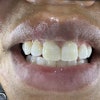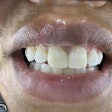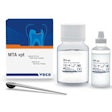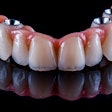This week's clinical tip courtesy of CDOCS focuses on bridge connectors and how they can help your dental patients.
Video transcript
"Hi, I'm Dr. Dan Butterman, and this is the CDOCS Tip of the Day.
I'd like to talk about bridge connectors. We have two different types in the software. The first one is an intersection connector, and this is typically what I use for anterior bridges, or when I want the ultimate aesthetics. It will allow me to create better separation between the pontic and the retainer tooth. Basically, an intersection connector is the amount of penetration between the pontic and the retainer crown.
"Now this area is measured in red, and we can see how big that surface area is simply by looking at how big the red area is. Now for an anterior bridge, whether it's lithium disilicate or the translucent zirconias, we want that to be 12 mm squared at a minimum.
"The other type of connector is an anatomical connector. Now the software will basically add a reinforcing piece of material, and this is a separate design feature in the software. An anatomical connector, because it's a separate restoration or design feature, it's going to have its own set of tools, meaning I can focus on connector lines and move and adjust those. I can increase the size of that. It can also change the position of that connector and move it elsewhere.
"So the reason we would choose an anatomical connector is because it's very quick and easy to get a large-size connector. Now we can use this in the anterior, but typically it's going to be somewhat less aesthetic, and I typically reserve this for posterior cases. In a posterior bridge, we're going to be shooting for 16 mm squared for, again, lithium disilicate or translucent zirconia.
"So I hope this information was helpful, and if you would like to see more, please visit us at CDOCS.com."



















